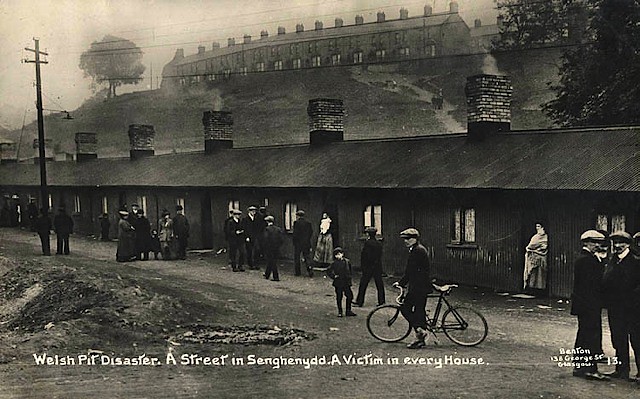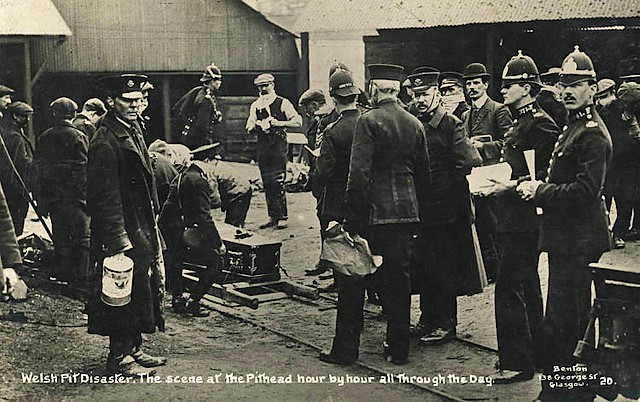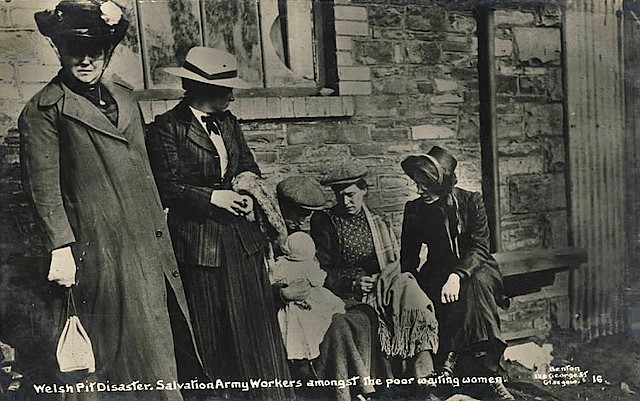
On this day in 1913, 439 workers die in a massive
coal-mine explosion in Wales. The incident was one of Britain's
worst-ever mining disasters.




The Sengenhydd colliery (coal mine) was located about eight miles from Cardiff in Wales. The mine consisted of two pits, side by side, which held nearly 1,000 miners in total. When the 6 a.m. shift began on October 14, 935 workers descended into the mine. At 8:12 a.m., a tremendous explosion ripped through one of the pits. Dust and debris were sent hundreds of feet into the air and bright red and orange flames went nearly as high.



It took a full hour to get the fire under control so that emergency workers wearing special protective gear could enter the mine. They encountered a grisly scene, with scores of headless and dismembered bodies littering the ground. Meanwhile, in other parts of the mine, hundreds of survivors were waiting for help.
Over the course of the day, groups of 20 survivors at a time were brought to the surface as a huge crowd gathered at ground level. Some reports indicate that as many as 40,000 people came to the Sengenhydd mine to watch the rescue effort. Nearly 500 miners were brought up safely, though there were several serious injuries. With still more than 300 workers unaccounted for, the rescuers dug all night and into the next day, finding approximately 100 more bodies.






With no further signs of life evident, mine officials, concerned about the stability of the mine, decided to seal the mine and leave the rest of the bodies deep within the earth.




Taken from: http://www.history.com/this-day-in-history/coal-miners-die-in-wales [14.10.2013]






The Sengenhydd colliery (coal mine) was located about eight miles from Cardiff in Wales. The mine consisted of two pits, side by side, which held nearly 1,000 miners in total. When the 6 a.m. shift began on October 14, 935 workers descended into the mine. At 8:12 a.m., a tremendous explosion ripped through one of the pits. Dust and debris were sent hundreds of feet into the air and bright red and orange flames went nearly as high.


It took a full hour to get the fire under control so that emergency workers wearing special protective gear could enter the mine. They encountered a grisly scene, with scores of headless and dismembered bodies littering the ground. Meanwhile, in other parts of the mine, hundreds of survivors were waiting for help.
Over the course of the day, groups of 20 survivors at a time were brought to the surface as a huge crowd gathered at ground level. Some reports indicate that as many as 40,000 people came to the Sengenhydd mine to watch the rescue effort. Nearly 500 miners were brought up safely, though there were several serious injuries. With still more than 300 workers unaccounted for, the rescuers dug all night and into the next day, finding approximately 100 more bodies.





With no further signs of life evident, mine officials, concerned about the stability of the mine, decided to seal the mine and leave the rest of the bodies deep within the earth.




Taken from: http://www.history.com/this-day-in-history/coal-miners-die-in-wales [14.10.2013]



No comments:
Post a Comment